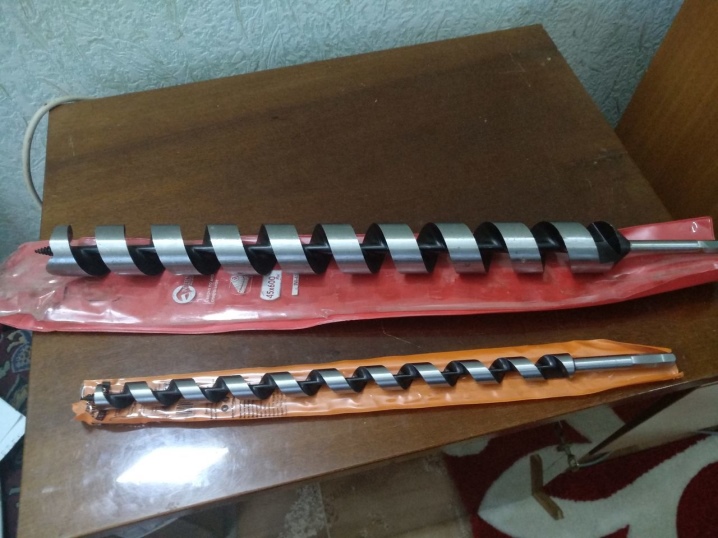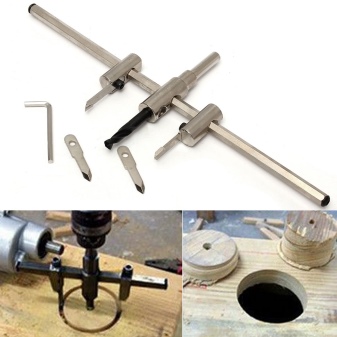All About Big Drills

Knowing everything about large drills is not necessary out of idle curiosity, by no means. This is a matter of daily practice for any home master. Drills of the largest diameter are used much more often than it might seem to uninformed people. And the correct choice of drills for large holes is quite relevant.

Peculiarities
It is easy to understand that large drills are used for large diameter holes. But at the same time, it is not something monolithic, but rather a whole group of tools. Even wood drilling is often practiced with a variety of tools.


And there is no need to talk about the processing of metal, brick and natural stone - this is generally obvious.
Since the largest holes are to be drilled, it is very important to use high-strength materials - all others simply will not withstand the applied mechanical force.


Large diameter drills, which is why they contain a detailed description of the composition. A lot of information is displayed in their marking.
Important. To punch a passage of a certain size, you need to take a device a few millimeters narrower. The better the tip is sharpened, the less important it is. It is also necessary to consider the difference between cylindrical and tapered shanks, which are designed for specific types of chucks.

Varieties
Among the largest drills, pen-type designs stand out. They are more common than others and are suitable even for inexperienced people. Mastering manipulation with them does not cause any difficulties. The largest cross-section can reach 6 cm. You can work relatively quickly - however, in this case, you cannot count on the high quality of the hole.

Other features of feather models:
- maximum channel depth 15 cm;
- delivery is either per piece, or 5-6 pieces of the most popular sizes;
- in a difficult case, you can purchase a clamping extension that increases the length of the drill by 30 cm;
- the larger the required size, the less likely it will be found in ready-made kits.

Adjustable chisel drill sold separately. It allows you to make holes with a cross section of 2.2 to 7.6 cm. Such devices involve the use of a sufficiently powerful power tool. But he should be able to work at low speeds.

Another nuance is that it is not so easy to work with adjustable devices, their use is the lot of trained people with the skill who already know how to drill such holes.

When you need to drill a large hole in a piece of furniture, a Forstner drill is usually used. It allows you to achieve perfectly smooth canal contours.

Other designs are almost incapable of doing this, no matter how carefully they are used. Also worth noting:
- high strength and durability of Forstner drills;
- limiting the largest section to 6 cm;
- the ability to drill by default by 10 cm, if necessary - with an extension, by another 30 cm;
- the possibility of driving blind holes (which is ensured by the protrusion of the centering spike by only 2 mm).

It is most convenient to punch a tree to a considerable depth with a twist drill. Such solutions are well-deservedly popular with craftsmen. All that is required is to mount the assembly to the drilling equipment and press a button. Spiral models are available in a wide variety of sizes. The longest of them reach a length of 60 cm.


There are also modifications with a length of 22 and 45 cm. But they are not very suitable for working with thick materials.Experts point out that a twist drill requires the use of a drill at a speed of about 800 revolutions. Provided that it is also powerful enough, then drilling will be very effective. To punch 2-3 logs in a log house with a drill shorter than 60 cm is nothing to think about.

Another common type is the circular adjustable fixture. In everyday life, he is often referred to as "a ballerina on a tree." Such a drill is designed like a compass. The centering element is placed in the very middle. The cutting parts are located on the crossbar, which flexibly changes the position.


Important features of such a product:
- suitability for processing sheets and solid structures up to 2 cm thick;
- successful work with particle boards, fiber boards, plywood;
- the ability to drill holes from 3 to 13 cm with a cross section (but always to a shallow depth);
- included in the delivery set of a hex key and a center punch for surface marks;
- preference for work at low speeds.

Nuances of choice
It is impossible to determine the quality of the material used by its appearance. But you can always ask for a certificate. This does not give a complete guarantee, however, the lack of certificates clearly indicates the low quality and / or questionable origin of the instrument. Careful inspection of the product is also required.
Good hardware, by definition, has no visual flaws, but sharpens them very carefully.

It is not necessary to check everything by eye - by rolling the drill on a flat surface, you can immediately notice any deviations. The packaging of the goods also deserves attention. Responsible manufacturers do not save on it. They should definitely alert:
- poor print quality;
- uneven lines;
- blurry letters;
- spelling mistakes, especially manufacturer names and labeling;
- insufficient strength of the package.

There are also pricing considerations to consider. Most budget drills rarely have a long service life. And in the segment of large fasteners, this problem is even more pronounced. No wonder - such structures experience very significant mechanical loads during use. Of course, it only makes sense to buy drills:
- in the manufacturer's brand stores;
- in large retail chains;
- in places checked in advance.













The comment was sent successfully.